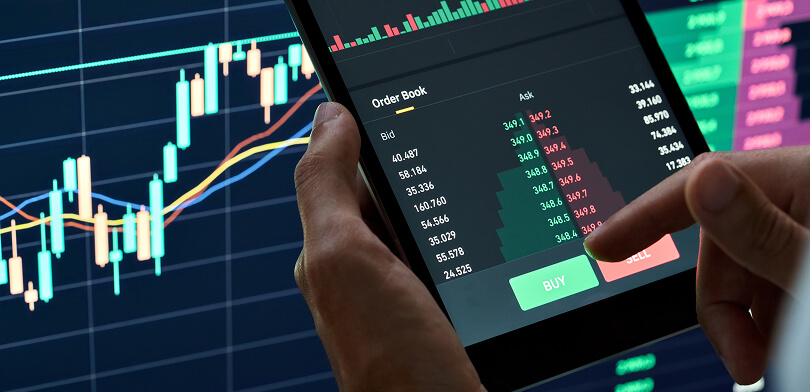Commodities in the market traded at a particular price at a particular point of time. However, it keeps changing, as per the demand and supply in the market or based on the sentiments of people, who are dealing with commodity-related various transactions like buying selling or trading in the commodity future etc.
Have you ever thought about how the price of these commodities is discovered or determined? Although, the government set the minimum support prices of various commodities like wheat, rice, sugarcane, paddy and other essential commodities in the market. But these commodities traded in the market above the minimum support price and this trading price is discovered through price discovery.
What is Price Discovery in Trading?
Price discovery in trading is the procedure of determining the market price of an asset that occurs due to interactions between the buyers and sellers. It is also referred to as a price discovery mechanism that helps to determine the spot price of an asset traded in the market.
A right balance between the buyers and sellers is the right indicator of demand and supply in the market. And based on the demand and supply of a particular asset, its price keeps changing. And at the price line, you can see the balance or fair price at the support and resistance levels.
Here the resistance level signifies the point where the demand for the asset starts decreasing resulting in the price of the asset also coming down. While on the other hand, the support indicates the level where demand for the asset starts increasing driving the price upwards. In both situations or levels, the supply of the same assets remains constant in the market.
Start trading commodities like gold, silver, and crude oil today — Open your Demat account now!
Price Discovery in the Commodity Market
The price discovery in the commodity market works similarly to financial instruments by determining the interactions between buyers and sellers. However, there are various commodities that are also traded in the open market or in retail shops, hence discovering the price becomes a little bit more difficult.
The commodity prices are also very much affected by its production and supply, lower the production or shortage of supply, the commodity prices will be higher. While overproduction or oversupply suppressing the demand leads to a decrease in the price of the commodities in the market.
However, there are various commodities that are also traded on the commodity exchange, hence their price are also affected due to the participation of various entities. These participants like brokers, dealers, investors or traders keep buying and selling the underlying index or various commodities and playing a big role in price discovery.
However, several price discovery mechanisms are used to discover the price of commodities, you need to understand these price discovery mechanisms to understand the dynamics of the commodity market.
Recommended Read: What is Commodity Trading?
What is the Price Discovery Mechanism?
Bid-ask spread, price auctions, and market matching are the leading price discovery mechanism that works to determine the price of commodities in the market. Though each mechanism has its own way of influencing the price discovery process, all of them work simultaneously in the market.
Bid-Ask Spread: This is one of the key mechanisms in the price discovery of any asset including commodities. This is a difference between the price quoted by the buyers and sellers in the market. The high price at which a buyer is willing to pay for an asset is called the bid price, while the lowest price at which the seller is willing to sell is called the asking price.
A slight difference between the bid-ask spread indicates that the liquidity is high in the market, whereas widespread bid-ask price show the liquidity is low in the market. High liquidity means sufficient buyers and sellers, while low liquidity shows buyers and sellers are less in the market.
Price Auctions: In this price discovery mechanism, sellers and buyers both submit their ask and bid, which are matched by the exchange to determine the price. Here, while matching the bid and ask price in price auctions, the exchange ensures that the buyers are willing to pay the highest price, while the sellers are willing to accept the lowest price.
This process can be performed continuously or periodically, where in continuous auctions orders are matched as they arrive. While in period auction, all orders are collected over a period and matched at a time.
Market Matching: This price discovery mechanism works in several ways, like pro-rata matching in which orders are matched on the basis of proportion of the total order volume. Or in the price-time priority method in which orders are matched on the basis of price and time of submission.
The different methods are used as per their implications on price discovery and market dynamics. However, there are various factors that determine the price discovery.
Recommended Read: How to Start Online Commodity Trading
Factors Determine the Price Discovery
Whatever the method of mechanism works in price discovery, there are various key factors that determine the price discovery in trading or while discovering the price of an asset or commodity traded in the market.
- Supply and Demand
- Attitudes to Risk
- Volatility in the Market
- Available Information
- Market Mechanisms
Importance of Price Discovery in Commodity Markets
Price discovery plays a big role in determining the fair price of the commodity as per the current demand and supply for the smooth functioning of the market. And for the Indian commodity market, price discovery matters a lot for discovering the best price of the commodity that is suitable for both buyer as well as sellers, at that point of time. Let’s find out why price discovery is important in commodity markets.
Fair Price Valuation
Price discovery in trading or in a commodity market matters a lot as the price of any asset or commodity trading in the market is mainly driven by its supply and demand. On the other hand, the market keeps changing, which also influences the price of commodities.
Hence, sometimes the price remains in a bullish trend and sometimes in a bearish trend making it difficult for the buyers and sellers to assess whether the price of the commodity is fairly priced, overvalued, or undervalued. Price discovery helps both buyers and sellers to determine the fair valuation of the commodity. And based on this valuation they enter into long or short trade positions.
Transparent Information
The price discovery process not only estimates the fair price of the commodity but also makes the market efficient enough to reflect the all information publically available for the participants. A transparent market allows the traders to execute their transactions at fair price helping them reduce the risk of sudden change in the price due to any information that can affect the price of the commodity.
Without price discovery, it would not be possible for the market to trade efficiently. The transparency in the commodity market helps all participants to be aware of all the information. A transparent and unbiased market promotes fair and competitive trading in the market.
Well Informed Decisions
Price discovery in the market provides a fair valuation of commodities and also promotes transparency to make all related information available to participants. Eventually, it helps traders to get to know whether the commodity is over-priced or under-priced in the market.
This kind of insight helps them to make well-informed decisions in trading and trade with the right strategy to make their trading journey not only profitable but also less risky. And finally, it helps them to enhance their potential of using such information in trading to make the right decisions as per the market conditions.
Recommended Read: Commodity Futures
Summing-up
Price discovery is simply a process of determining the price of an asset or commodity that is acceptable for both – buyers and sellers. One of the biggest factors that determine the price of a commodity is supply and demand. When demand is more than supply, the price of the commodity increases as buyers will pay the higher price because of a shortage that is favourable for the sellers to trade at the higher price.
On the other hand, when the demand of the commodity is less than its supply, the price will come down, as the number of buyers is less in the market and they are not willing to pay much. High supply and low demand mean the commodity is easily available in the market resulting price is favourable for the buyers.
However, market volatility and market mechanism are some other factors that influence the price. But, it is important to determine the fair price of the commodity and transparency in the market helping all the participants to make a well-informed decision based on such information and price discovery.










